Dallas Arboretum and Botanical Garden
Introduction
Text-to-speech Audio
Images
The Trammell Crow Visitor Education Pavilion greets visitors to the arboretum.
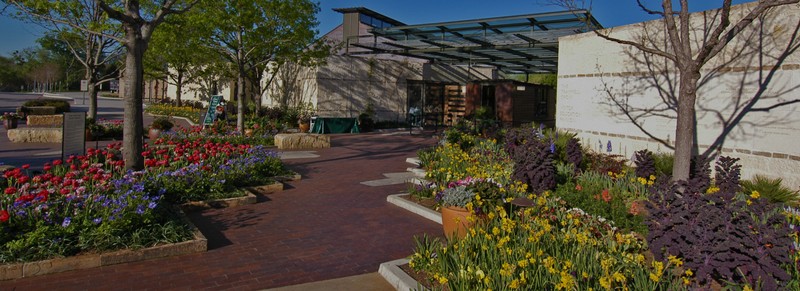
This long archway of trees is just one of the unique features at the arboretum.
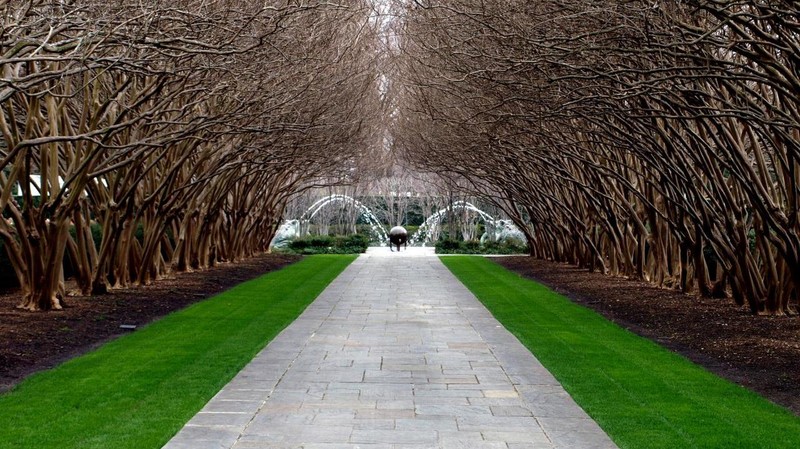
Sit and have a chat with George Washington. There are other statues of famous individuals located throughout the arboretum.
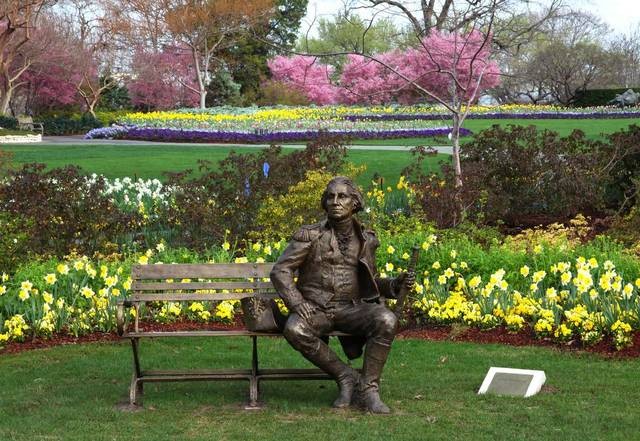
One of the better views at the arboretum features a reflecting pool with White Rock Lake in the background.
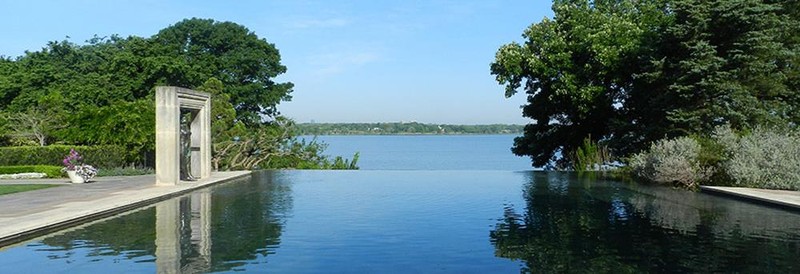
Dallas Blooms is a very appropriate name for the arboretum's spring festival as evidenced by this photo.
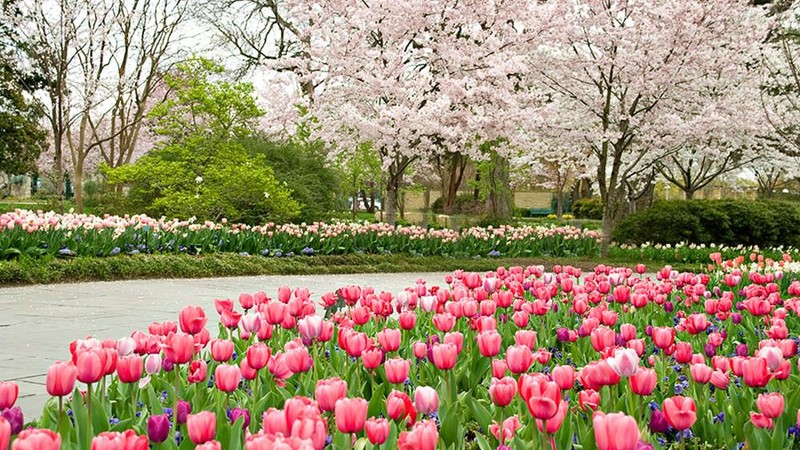
Backstory and Context
Text-to-speech Audio
Alex and Roberta Camp established their 22-acre estate on the shores of White Rock Lake in 1938. Their 8,100 square-foot home was designed by renowned Texas residential architect John Staub. Two years later, the man who applied geophysics to the oil industry, Everette DeGolyer and his wife, Nell, completed their estate, Rancho Encimal, adjacent to the Camps. The DeGoylers were collectors of rare books and generous philanthropists as well. Everette bequeathed a portion of his rare books collection and fortune to establish the DeGolyler Library at Southern Methodist University in 1957, shortly after his death. He was also the president of the Dallas Arboretum Foundation, which makes the location of the current arboretum quite apropos.
In 1974, the Dallas Arboretum and Botanical Society (DABS) was incorporated as a nonprofit with the goal of finding a home. The City of Dallas Park Board, which had purchased the DeGolyer estate from SMU in 1976, informed DABS that they were open to handing over the estate if DABS could raise the required funds. DABS immediately went to work and raised over $1 million which they used to purchase the Camp property in 1980. In 1982, DABS and the city reached an agreement on the transfer of the DeGolyer estate and the arboretum and botanical garden now had 66 combined acres which to call its own and it first opened to the public in 1984.
Since 1984 DABS has transformed those 66 acres into one of the premier arboretums and botanical gardens in the country. Its 19 named gardens include the Lay Ornamental Garden which was the first to open in 1989, the 8-acre Rory Meyers Children’s Adventure Garden and the Trial Gardens which conducts research into which plants, shrubs, flowers and crops will thrive in the climate of northcentral Texas and then shares its findings with the public. The arboretum opened its Trammell Crow Visitor Education Pavilion in 2007 to provide patrons with garden information and various educational opportunities. The arboretum also features numerous seasonal and children’s events throughout the year. They include its popular Dallas Blooms which has been ongoing for over 30 years and features hundreds of thousands of tulips; its “Cool Thursdays” concert series which takes place within its outdoor amphitheater; and its Autumn at the Arboretum which features a pumpkin house and other gourd-based artwork. Finally, the arboretum also includes its children’s Texas Pioneer Adventure which includes shrunken replicas of historical prairie dwellings such as a sod house and teepee.
